The hedgerows between Galmpton and Greenway
Hedgerows are the highways of the natural world. But they do not work as our transportational system works. There is no code to be followed; no diversions or traffic; no one-way or contraflow system. From the largest to the most minute, creatures cut across green lanes as well as moving along them - in search of food or a mate, or to enforce the boundaries of their territory.
These high-banked hedgerows are natural windbreaks. Once they were the stitching that bound this green and pleasant land together. It is all too easy to forget that they were often planted to partition the land. Under the Enclosure Acts more sheep were put out to pasture and many more tenants were brought into abject poverty as a result.
We have walked the lanes between Galmpton and Greenway many times over the years, in all conditions and all seasons. And oftentimes we have barely moved; witnessing this special and incomparable ecosystem on either side.
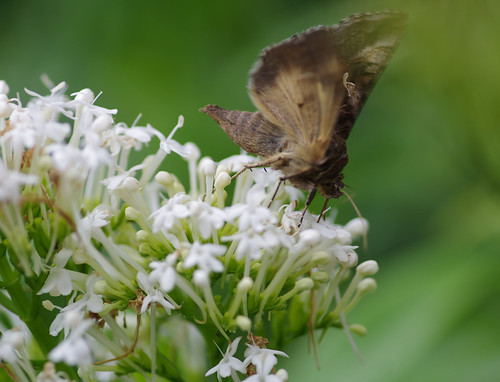
Silver Y Moth (Autographa gamma) on White Valerian flowers
After we saw hover flies flocking to hogweed flowers our attention was diverted by the blur of movement above. We waited for a still moment, hoping we would be able to identify the moth later. The distinguishing mark on the forewing gives this moth its name. It is a common day-flying species across the UK.

Garden Spider (Araneus diadematus)
Sherry took a few pictures of this spider, experimenting with different angles. With two more legs, spiders are harder to capture clearly than their insect prey. I wonder how long it had taken to weave itself to this point.
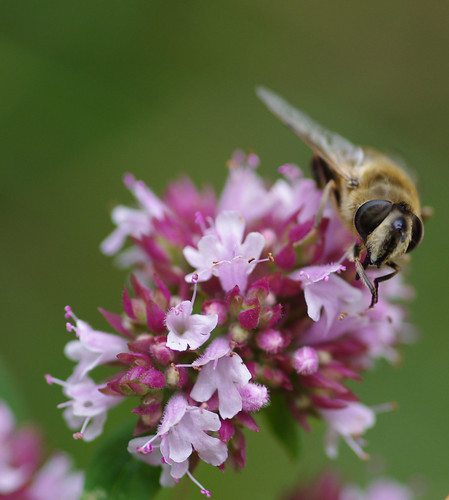
Hover fly on Wild Marjoram (Origanum vulgare)
This picture was larger originally but being tightly-cropped transformed it into something more dramatic.

Bittersweet (Solanum dulcamara)
As we dawdled along the lane, the change in the hedgerow colours became apparent. The poisonous bittersweet flowers later in the year and thrives in shady places.
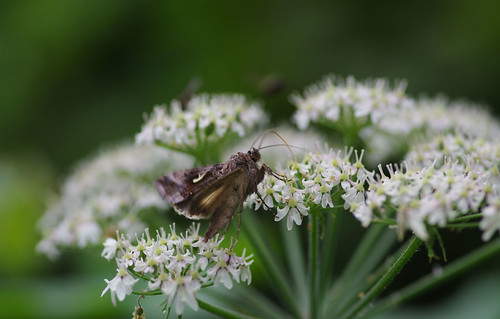
Another Silver Y moth
And then we saw another Silver Y! This one seemed to flutter in less of a frenzy. In fact its wings put me in mind of footage of hummingbirds. Or perhaps Sherry was just getting better at predicting its movement. We rounded a corner and Lady paused to cool her pads in the clear stream.
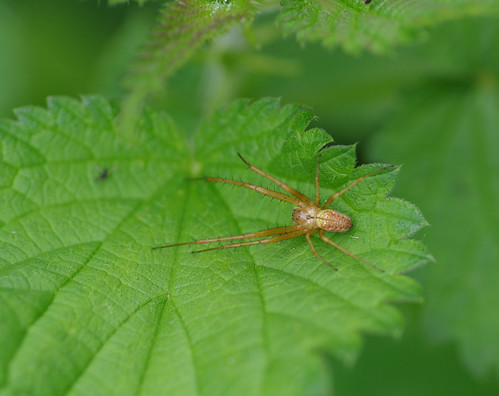
Lesser Garden Spider (Metellina segmentata)
Nettle leaves are a great place to see caterpillars, beetles and spiders. This arachnid had front legs like lances.
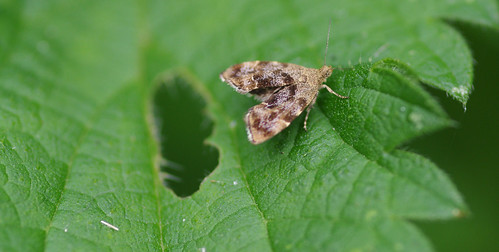
Nettle-tap moth (Anthophila fabriciana)
Although the time will probably never come when we will run out of new species to see, we are encountering many moths and flowers repeatedly. Our initial aim was to record and to photograph every individual species. But you can learn more about something through repeated observation and also attain better pictures. This Nettle-tap moth had probably eaten its way through the hole to its left. And I prefer this picture to Sherry's first photographic capture of the species a couple of months back on Galmpton Common.
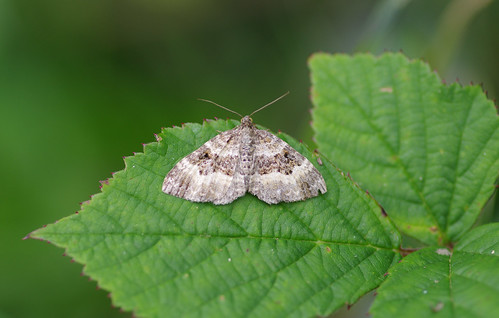
Common Carpet Moth (Epirrhoe alternata)
Further up the hill, on a bramble leaf, Sherry spotted this Carpet moth, another familiar species. Looking closer, they always seem to have wonky eyes. Who knows what these creatures think about us giants that pause to peer and gawp at them?
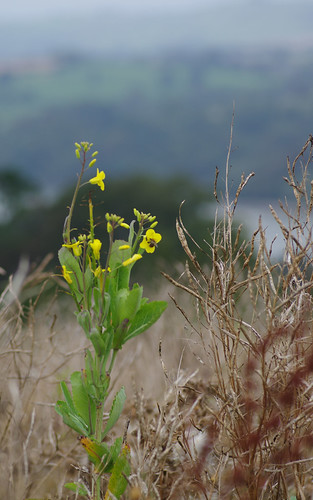
This is a kind of brassica. My guess is either Wild Cabbage or Kale.
Surrounded by all the dead stuff, the flowers look more striking. But the field was fenced and I could not take a closer look to ascertain the exact species.
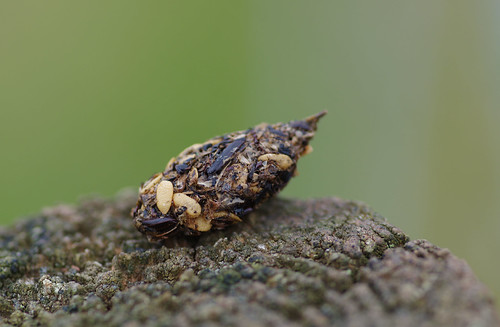
A bird pellet. Whatever bird this belongs to, it clearly has a preference for seeds.
Hours before we passed, the bird would have rested on this post. If I have to hazard a guess I would plump for a sort of crow. Some crow species are omnivores so they might make pellets such as these.

Ribbed Melilot (Melilotus officinalis)
It took me a while to come to a decision over the flower above. Tall Melilot looks identical but the shape of the seeds was the decisive factor here. It was in the same field as the brassica, on the margins but agonisingly still the wrong side of the fence.

The yellow lichen in the centre of the picture is Xantharia polycarpa
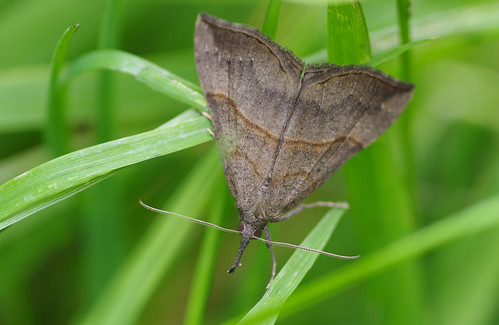
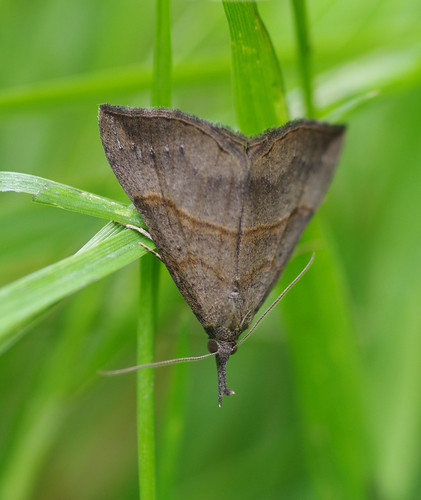
Snout moth (Hypena proboscidalis)
This species is undoubtedly the Pinocchio of the moth world. I was also fascinated by the shapes it made with its antennae. At some moments it seemed like an exaggerated moustache.
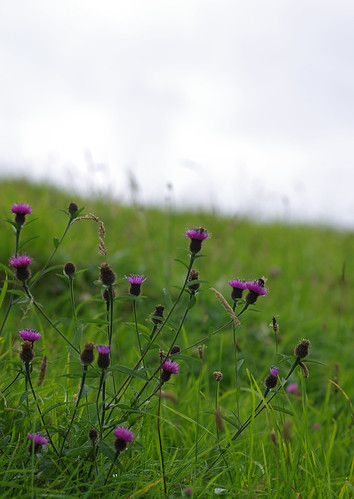
Common Knapweeds (Centaurea nigra)
Knapweeds grace and enliven many a meadow's edge. They are also a haven for bumblebees.
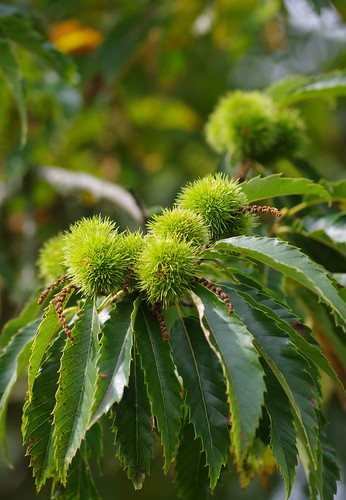
Sweet Chestnuts
In a couple of months these encased nuts might be ready to eat. That's if the grey squirrels haven't beaten us to it or hoarded them somewhere we will never find them.
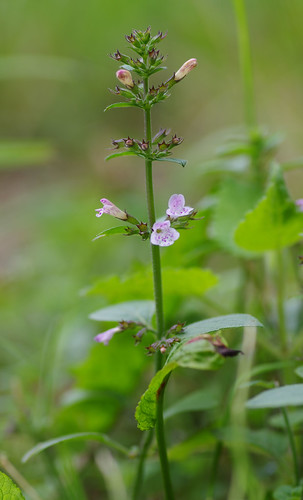
Common Calamint (Clinopodium ascendens)
In spite of walking the same lane many times I don't remember seeing this flower growing anywhere before. Which just goes to prove that however rigorously you look for certain things, other things can escape your notice. I could not find an identical match in my flower books but I had better luck looking online.
We were walking back along Greenway Road by now, on the homeward leg of our journey. Sherry spotted this wonderful moth but after a few unconvincing shots the camera battery died. I went to get the spare out of my coat pocket, only to find it wasn't there. I then helpfully remembered leaving it on the dining table at home. A lively update ensued, the upshot of which saw Sherry marching past me and back to the car. I argued the futility of the exercise of going home and returning. The chances of finding the moth still there were the wrong side of hopeless. Nevertheless when we returned (at least half an hour later) the moth was, unbelievably, where we had left it. Delighted and thankfully pacified, Sherry was able to get some improved shots.
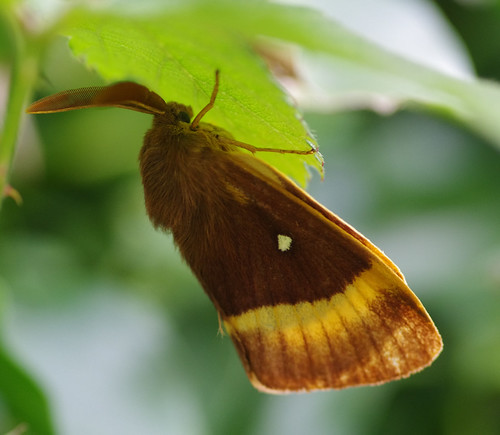

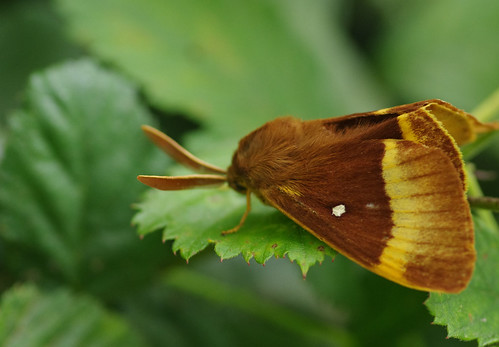
Three different views of an Oak Eggar Moth (Lasiocampa quercus)
According to my field guide, the Oak Eggar is a common species to be encountered during the day. We certainly haven't seen one before. It was the perfect end to our walk. Circumstances had rewarded us, robbed us and finally rewarded us again for our (or rather in this case, Sherry's diligence and determination.)
Walking back to the car, I made a quiet mental note to double-check the contents of the dining table before we went out again.
OUR ROUTE
On the OS EXPLORER MAP OL20: SOUTH DEVON, Combe Lane is to be found to the south of Galmpton. From the Galmpton end, there is a signed turning on the right, by the side of the railway bridge. Proceed along it and up the hill. At the next path junction, follow the sign to the right for Greenway. On a clear day you will be able to savour the grand sweep of the bay and the breathtaking tors of Dartmoor in the distance. Then there is a stile to go through. Veer to the right once through it. A few yards later and you will come to a junction. Turn right and walk along the road (during the summer months you can reach Greenway House, once the occasional home of Agatha Christie, and now a National Trust property.)
At the bottom of the long, straight road, go right at the junction and follow the road into Galmpton and, if necessary, beyond.

Comments
Add a Comment